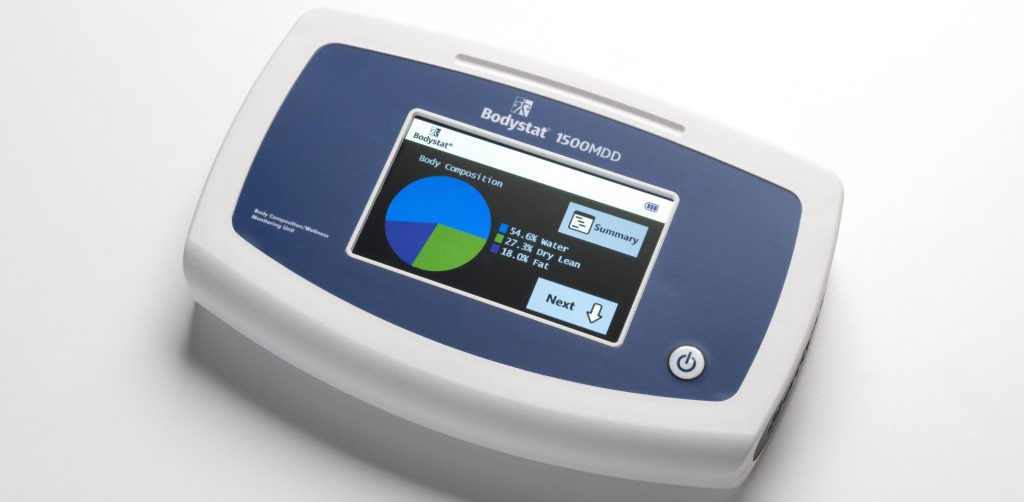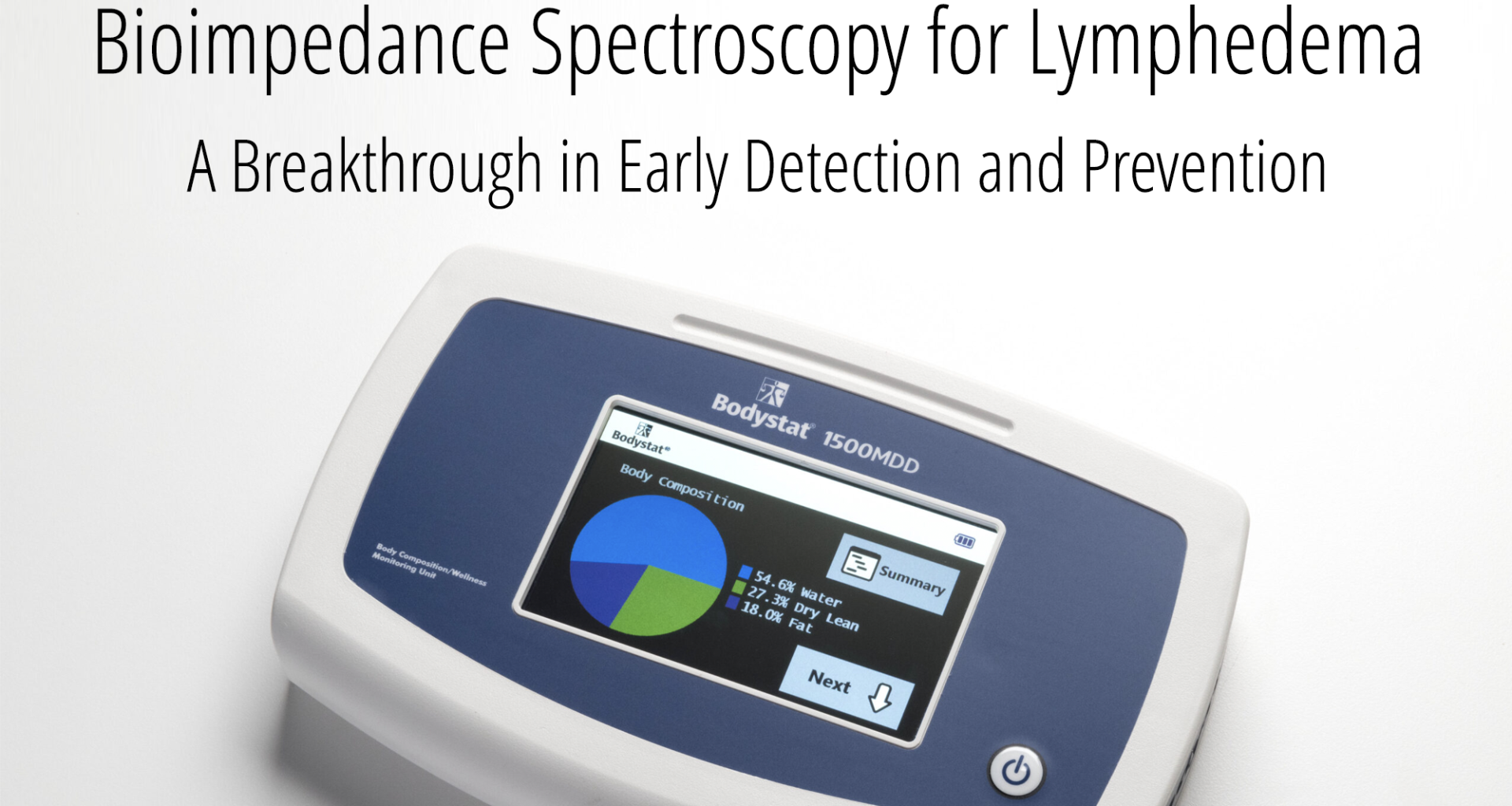Lymphedema is a chronic condition that leads to fluid accumulation and swelling, typically in the arms and legs. It often occurs after cancer treatments that affect the lymphatic system, such as lymph node removal or radiation therapy. Early detection is key to preventing the condition from worsening. Bioimpedance spectroscopy (BIS) has emerged as a revolutionary method for detecting lymphedema before noticeable swelling occurs, allowing for early intervention and improved patient outcomes.
Understanding Bioimpedance Spectroscopy for Lymphedema
Bioimpedance spectroscopy is a non-invasive technology that measures how an electrical current travels through the body’s tissues. Since lymph fluid affects the conductivity of tissues, BIS can detect subtle changes in fluid levels, making it a powerful tool for identifying lymphedema before it progresses. Unlike traditional measurement methods, BIS is highly sensitive, detecting fluid changes as small as 36 milliliters, making it an essential tool for lymphedema surveillance.

How Does Bioimpedance Spectroscopy Work?
BIS uses multiple frequencies of electrical currents to assess fluid resistance in the body. By analyzing these resistance values, the technology can determine extracellular and intracellular fluid distribution, identifying early-stage lymphedema even before physical symptoms appear. The process is quick, painless, and provides highly accurate results, making it an excellent option for routine monitoring.
Why BIS is Superior to Traditional Lymphedema Detection Methods
Historically, healthcare providers have relied on measuring limb circumference with a tape measure to assess lymphedema. However, this method has significant limitations:
- Lack of Sensitivity: Tape measurements cannot detect small changes in fluid levels, meaning early-stage lymphedema often goes unnoticed.
- Human Error: Manual measurements are prone to inconsistencies, leading to unreliable assessments.
- Delayed Detection: By the time swelling is measurable, the condition may already be progressing.
In contrast, BIS provides objective, quantifiable data that enables clinicians to detect subclinical lymphedema before symptoms become visible. This allows for early intervention strategies, such as compression therapy, to be implemented promptly, significantly reducing the risk of progression to chronic lymphedema.
Clinical Evidence Supporting Bioimpedance Spectroscopy for Lymphedema
Several studies have demonstrated the efficacy of BIS in lymphedema surveillance. One of the most significant trials is the PREVENT trial, a large, prospective, randomized study that examined BIS’s effectiveness compared to traditional measurement techniques.
Key Findings from the PREVENT Trial:
- Early Detection Benefits: Patients monitored with BIS had a significantly lower rate of progression to chronic lymphedema compared to those monitored with tape measures.
- Ongoing Risk Monitoring: The study found that patients remain at risk for developing lymphedema up to three years after treatment, emphasizing the need for continuous monitoring.
- Proactive Intervention Success: Patients who received early intervention, such as compression therapy, after BIS-detected subclinical lymphedema had better long-term outcomes.
These findings reinforce the importance of integrating BIS into routine post-treatment monitoring for individuals at risk of developing lymphedema, particularly breast cancer survivors.
The Role of Bioimpedance Spectroscopy in Breast Cancer-Related Lymphedema
Breast cancer patients who undergo surgery involving lymph node removal or radiation therapy are at high risk of developing breast cancer-related lymphedema (BCRL). Traditionally, this condition has been challenging to detect early, leading to long-term complications. BIS offers a proactive approach, enabling physicians to monitor patients closely and intervene before lymphedema becomes severe.
BIS vs. Traditional Tape Measurement in Breast Cancer Patients
A study published in Oncology Nursing News compared BIS to traditional tape measurements in breast cancer patients. Researchers found that BIS provided significantly more accurate results, allowing for earlier detection and improved treatment outcomes.
- Patients monitored with BIS had a reduced risk of developing chronic lymphedema.
- BIS-guided intervention led to better management of fluid accumulation, preventing permanent tissue damage.
- The study emphasized that BIS should be a standard tool in breast cancer post-treatment care.
How to Implement Bioimpedance Spectroscopy in Clinical Practice
For healthcare providers, incorporating BIS into lymphedema surveillance requires minimal effort but offers significant benefits.
Steps for Integrating BIS in a Clinical Setting:
- Identify At-Risk Patients: Patients who have undergone lymph node dissection, radiation therapy, or have other risk factors for lymphedema should be prioritized for BIS screening.
- Schedule Regular BIS Assessments: Routine screenings should be conducted at baseline (pre-treatment) and at regular intervals post-treatment.
- Implement Early Intervention Strategies: If BIS detects fluid accumulation, prompt interventions such as compression therapy, physical therapy, or self-care and lifestyle modifications should be recommended.
- Educate Patients: Inform patients about the benefits of BIS monitoring and the importance of early intervention to prevent chronic lymphedema.
By incorporating BIS into standard practice, healthcare providers can improve patient outcomes, reduce the incidence of chronic lymphedema, and enhance the quality of life for at-risk individuals.
The Future of Bioimpedance Spectroscopy in Lymphedema Care
As medical technology continues to advance, bioimpedance spectroscopy for lymphedema is expected to play an even larger role in early detection and management. With increased adoption, BIS has the potential to become the gold standard for lymphedema surveillance, particularly for cancer survivors.
Potential Developments in BIS Technology:
- Portable BIS Devices: Future advancements may lead to the development of at-home BIS monitoring systems, allowing patients to track their condition more frequently.
- AI-Driven Analysis: Artificial intelligence could further enhance BIS data interpretation, providing even more accurate early detection capabilities.
- Expanded Clinical Applications: While BIS is primarily used for lymphedema, ongoing research is exploring its potential for detecting fluid imbalances in other conditions, such as heart failure and kidney disease.
Conclusion: Why Bioimpedance Spectroscopy is a Game-Changer for Lymphedema Patients
Lymphedema is a serious and often debilitating condition, but bioimpedance spectroscopy offers a transformative approach to early detection and management. Compared to traditional measurement techniques, BIS provides superior sensitivity, allowing for early intervention and significantly reducing the risk of chronic lymphedema.
For breast cancer survivors, post-surgical patients, and individuals at risk for lymphedema, BIS is a critical tool that enables proactive monitoring and better treatment outcomes. As awareness of BIS grows and more healthcare providers adopt this technology, the future of lymphedema care will undoubtedly be improved.
References:
- Cleveland Clinic – Analysis from a large prospective randomized trial on lymphedema surveillance
- Oncology Nursing News – BIS in preventing chronic lymphedema
- Oncozine – BIS vs. tape measurement in breast cancer-related lymphedema
By embracing bioimpedance spectroscopy for lymphedema, healthcare providers can revolutionize patient care, ensuring that those at risk receive the monitoring and intervention they need to lead healthier lives.

